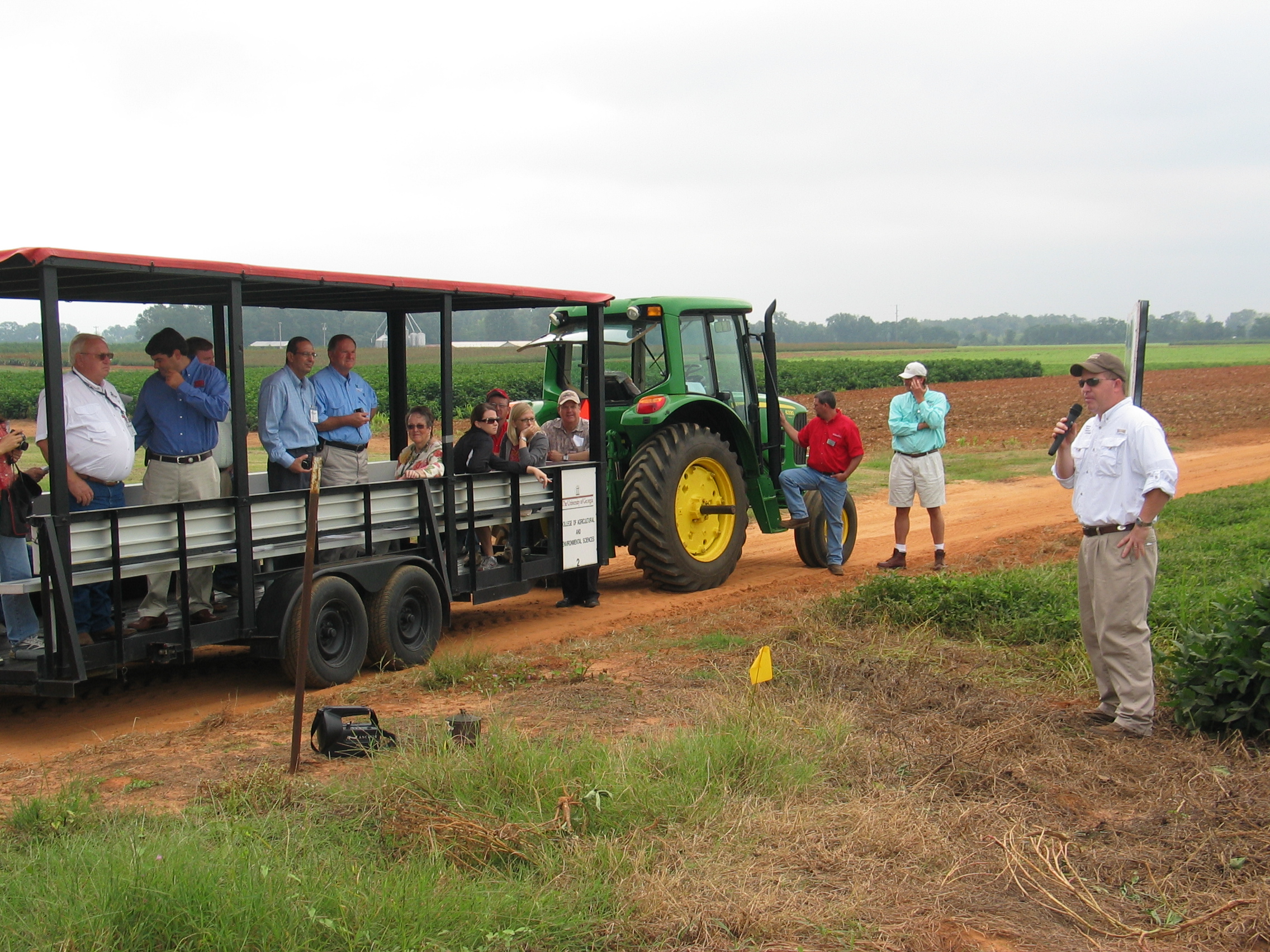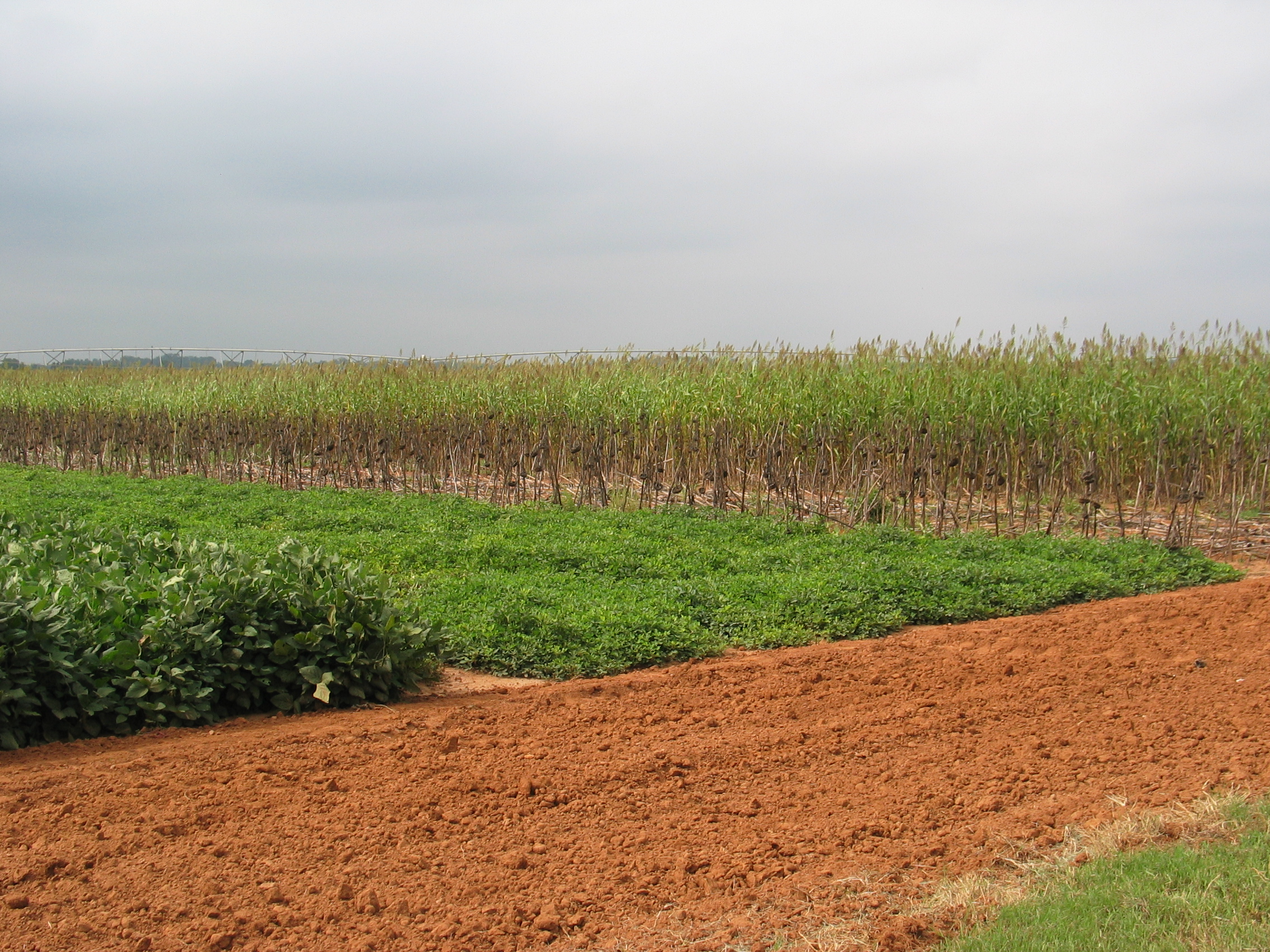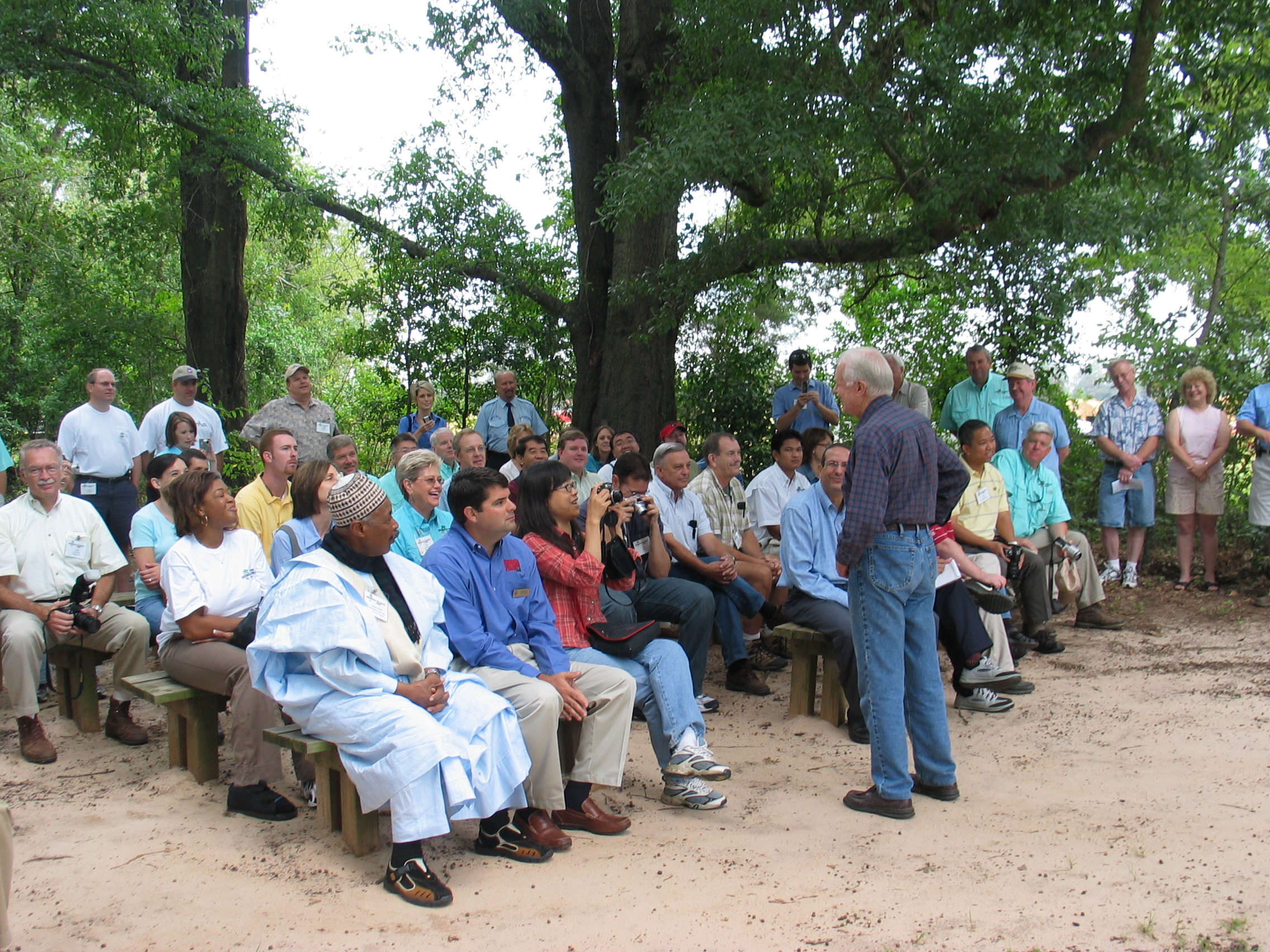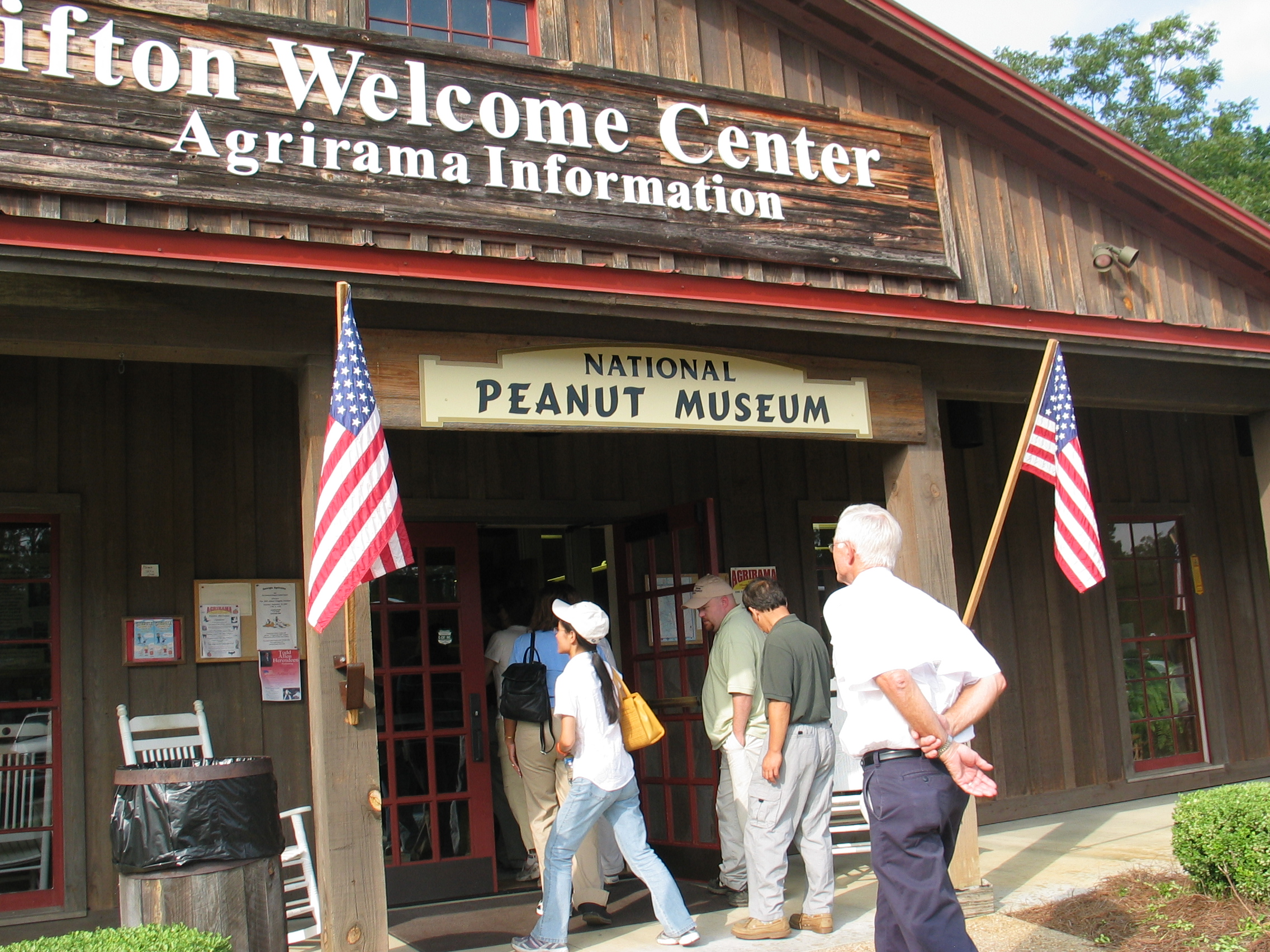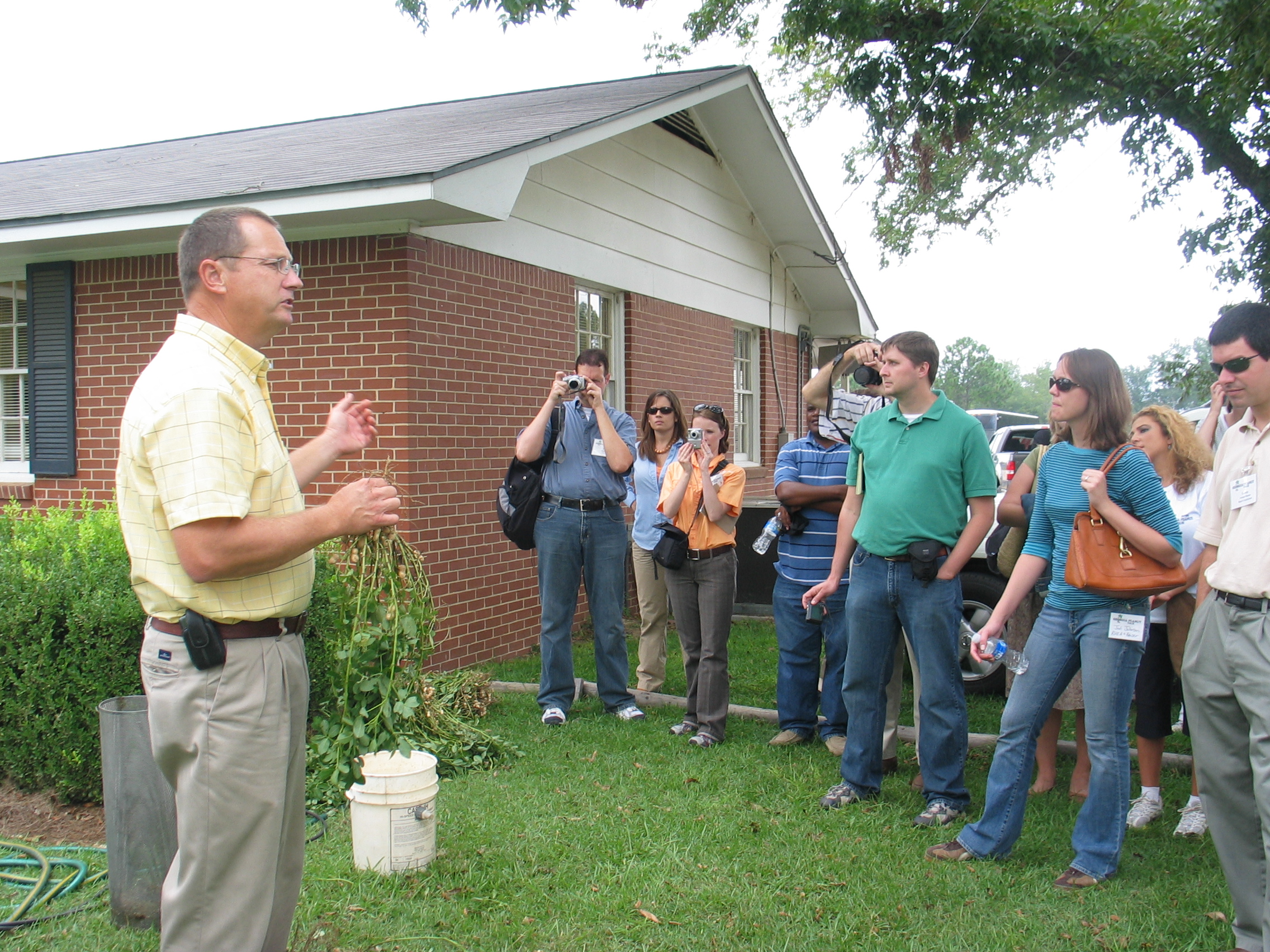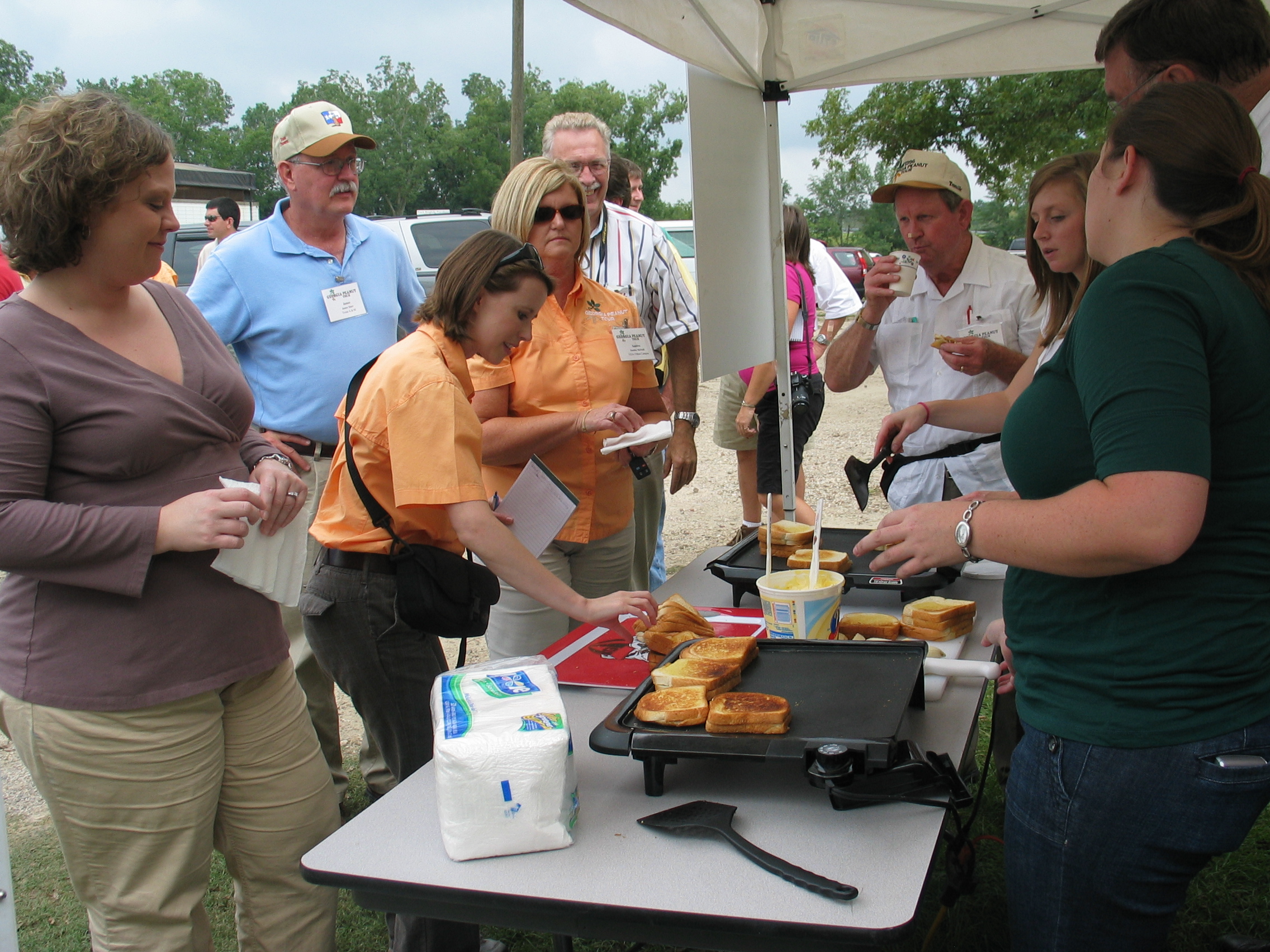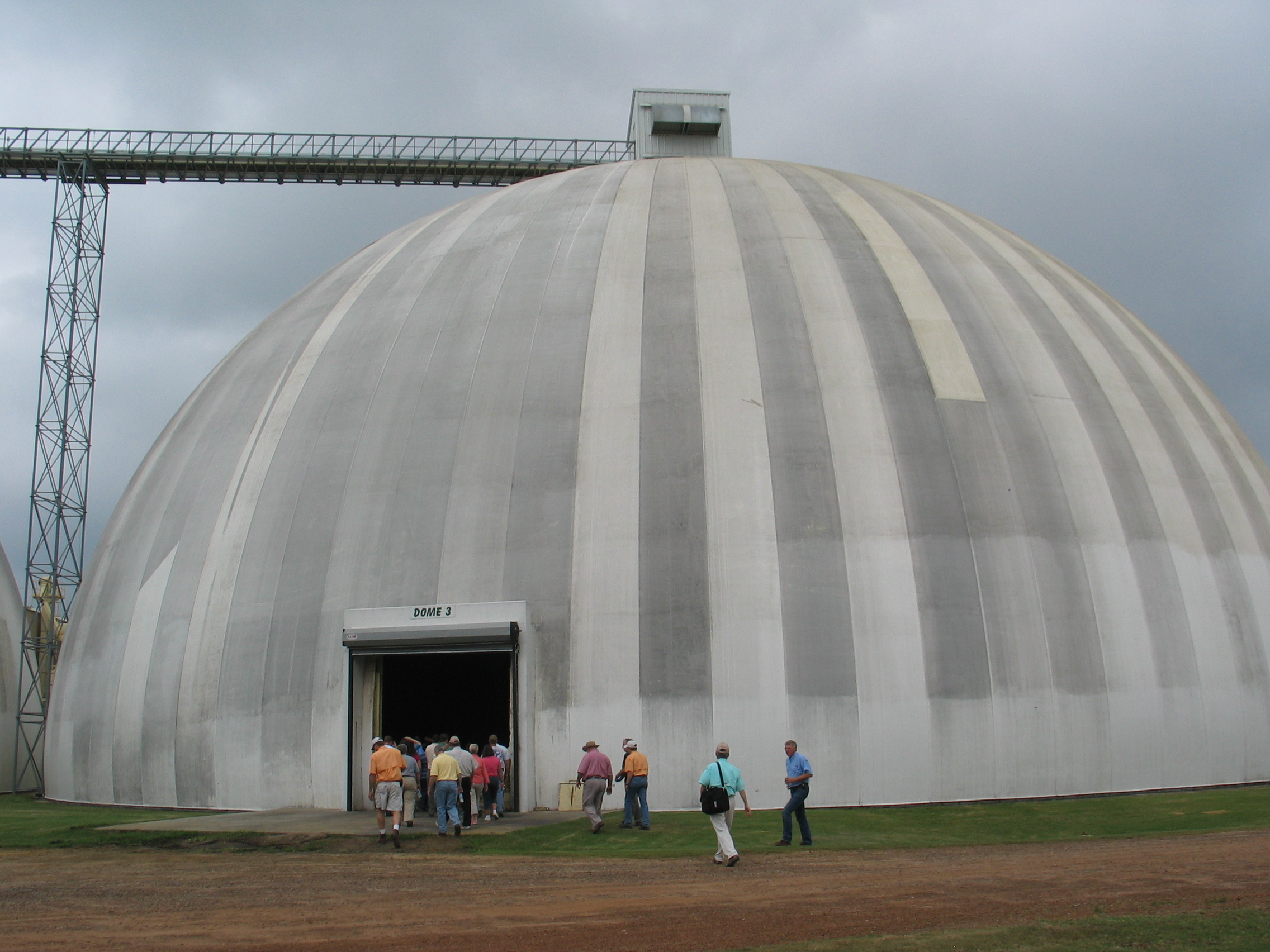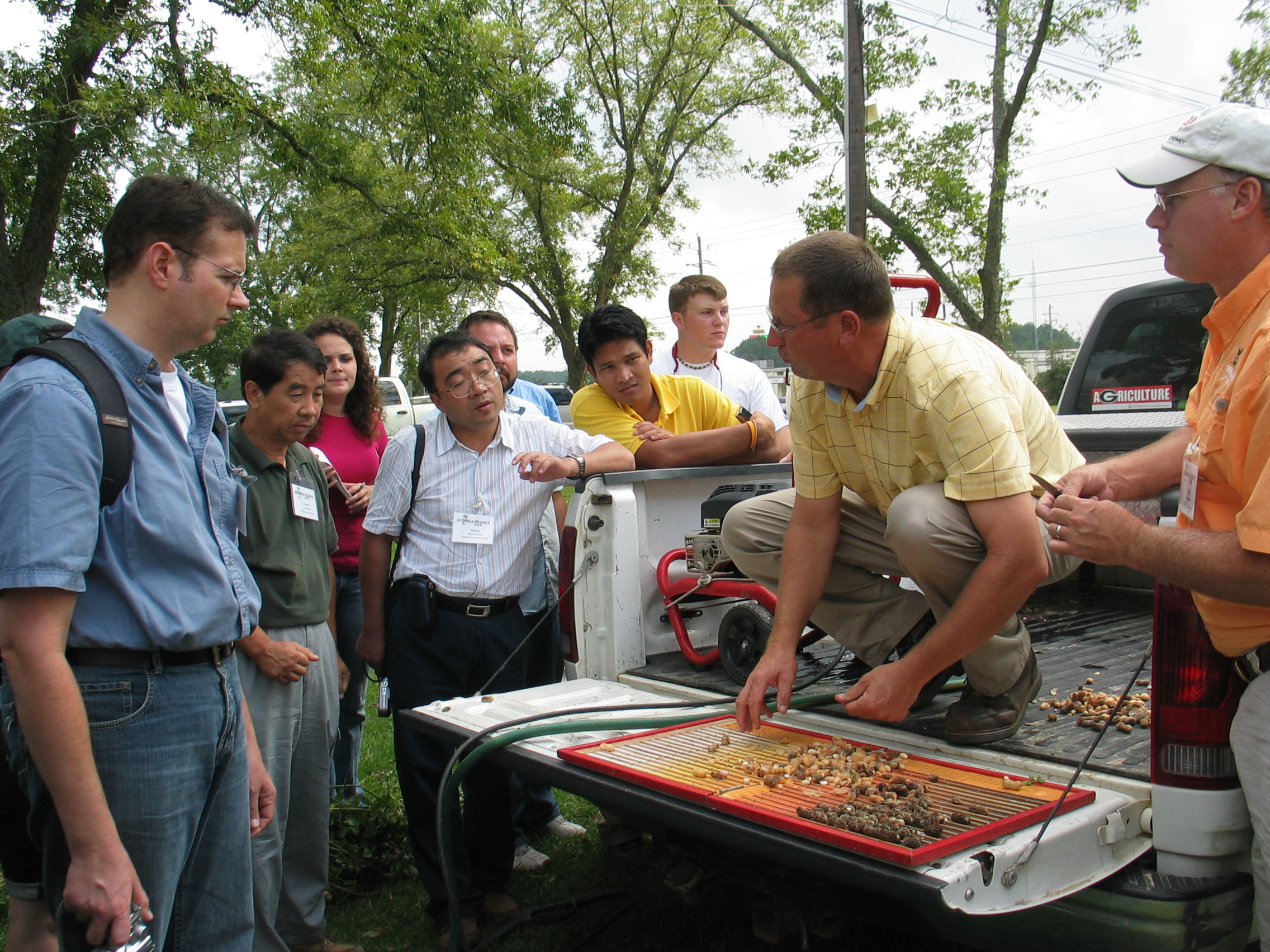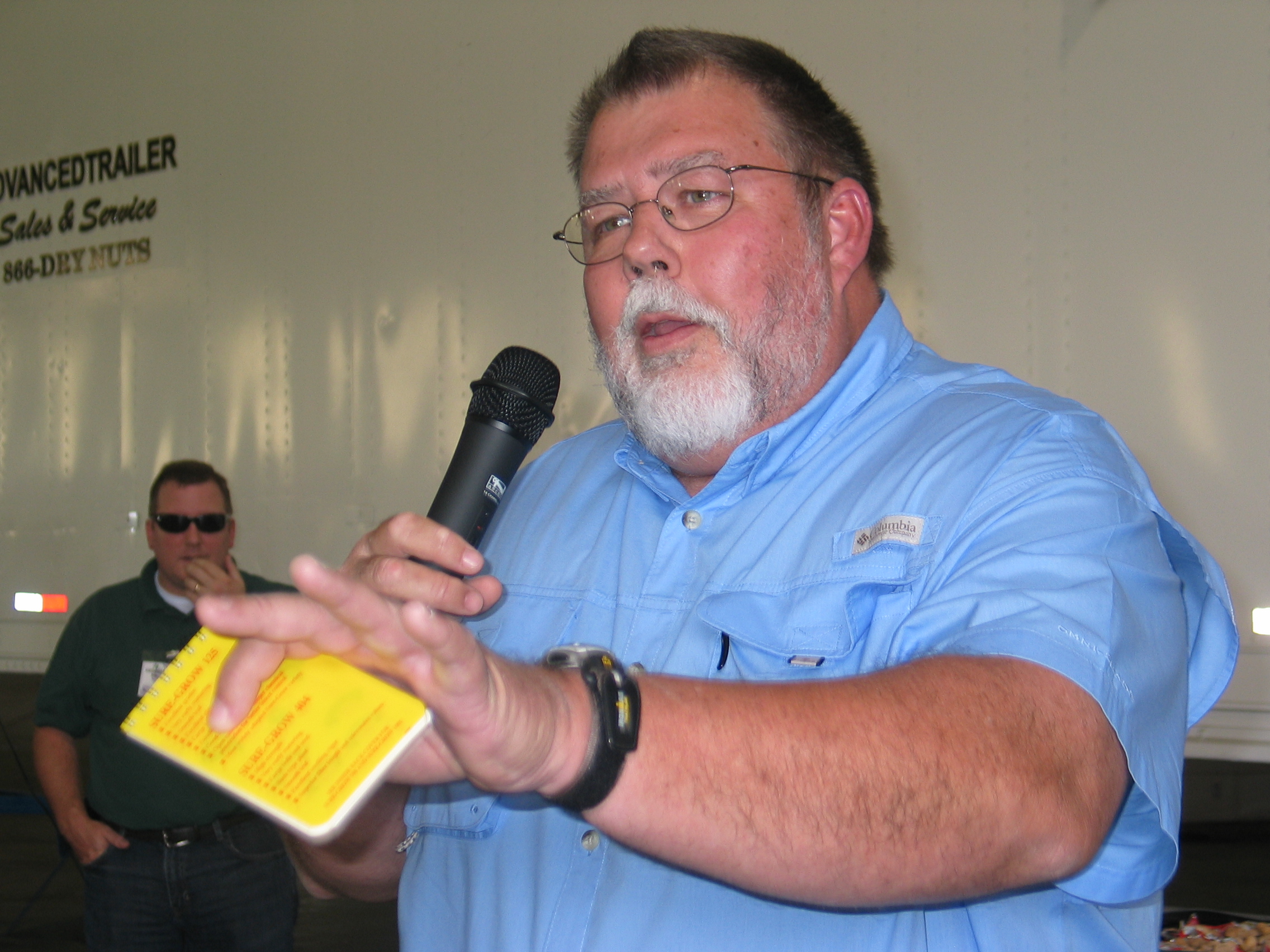 Dooly County – During the tour stop at Advanced Trailers in Vienna, Ga. the Dooly County Extension Coordinator Chuck Ellis met the group to provide an update on agriculture in Dooly County. The peanut acreage is up 15 to 20% in 2008. Last year the crop brought in a record yield of 3,700 lbs. per acre and Ellis says the 2008 crop is looking good too. Approximately 55% of the acreage is irrigated and farmers in the county are continuing to add pivots when they can get a permit. Approximately 95% of the acreage is in strip till. Growers have continued to have problems with glyphosate & ALS resistant pigweed in the county. The resistance was first noted in 2005 and continues to be a problem today. Dooly County is known as a major cotton producing county and is home to the Georgia Cotton Museum. Learn more about the Dooly County Cotton Museum online.
Dooly County – During the tour stop at Advanced Trailers in Vienna, Ga. the Dooly County Extension Coordinator Chuck Ellis met the group to provide an update on agriculture in Dooly County. The peanut acreage is up 15 to 20% in 2008. Last year the crop brought in a record yield of 3,700 lbs. per acre and Ellis says the 2008 crop is looking good too. Approximately 55% of the acreage is irrigated and farmers in the county are continuing to add pivots when they can get a permit. Approximately 95% of the acreage is in strip till. Growers have continued to have problems with glyphosate & ALS resistant pigweed in the county. The resistance was first noted in 2005 and continues to be a problem today. Dooly County is known as a major cotton producing county and is home to the Georgia Cotton Museum. Learn more about the Dooly County Cotton Museum online.
Wilcox County – Tim Smith, Wilcox County Extension Agent provided an update to tour attendees on agriculture in the county. Farmers in the county planted 16,280 acres of peanuts, 22,340 acres of cotton, 5,213 acres of wheat, 2,475 acres of soybeans, 2,560 acres of sorghum, 1,500 acres of watermelons, 212 acres of cantaloupe, 300 acres of string beans. This diverse agricultural county also has 6,200 acres in the conservation reserve program. According to Smith, the peanut crop looks good overall in Wilcox County. He estimates yields near 5,000 lbs. per acre for irrigated peanuts and 3,000 lbs. per acre for dryland peanuts. Farmers have faced many issues this year including the drought, high fuel costs and additional inputs and pest problems.

